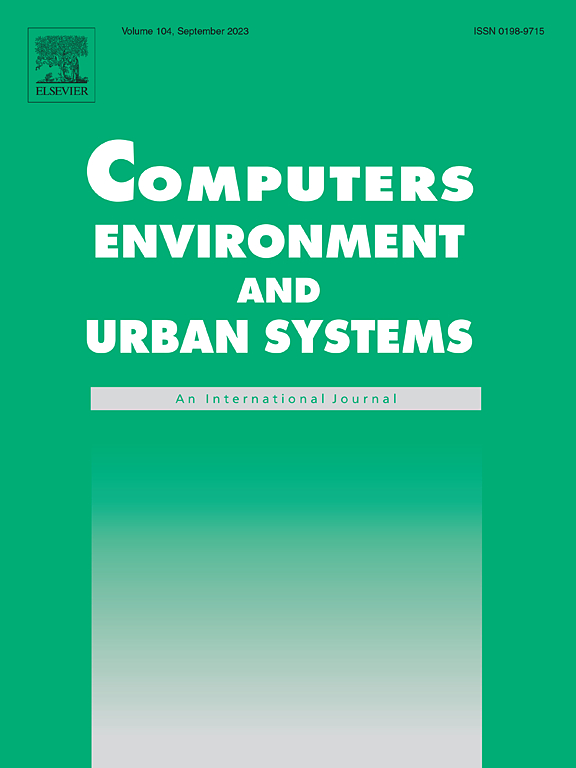Predicting Desire Paths: Agent-Based Simulation for Neighbourhood Route Planning
IF 8.3
1区 地球科学
Q1 ENVIRONMENTAL STUDIES
Computers Environment and Urban Systems
Pub Date : 2025-02-05
DOI:10.1016/j.compenvurbsys.2025.102251
引用次数: 0
Abstract
This study addresses how informal “desire paths” emerge when urban infrastructure does not align with pedestrian preferences, focusing on small, local neighbourhoods to bridge a recognised research gap in urban planning. It introduces an agent-based modelling (ABM) framework that builds on path optimisation, affordance theory, and two novel models: a weighted preferences model that accounts for varied pedestrian priorities beyond route length and an obstacle avoidance model that achieves 60 % accuracy, indicating it can successfully replicate aspects of natural navigation, but still showing potential for further refinements. Conducted in three-dimensional simulations using Unity3D and the Agent-Based Modelling for Unity (ABMU) toolkit, this approach yields complex path networks that illuminate pedestrian decision-making processes and highlight the impact of diverse priorities, including local optimisation of route length, on network efficiency. By clarifying these ABM-driven insights, we underscore the significance of integrating multiple pedestrian preferences into urban planning to foster more sustainable development in local neighbourhoods.

期望路径预测:基于智能体的邻里路线规划仿真
本研究探讨了当城市基础设施与行人偏好不一致时,非正式的“愿望路径”是如何出现的,重点关注小型当地社区,以弥合城市规划中公认的研究差距。它引入了一个基于智能体的建模(ABM)框架,该框架建立在路径优化、功能理论和两个新模型的基础上:一个加权偏好模型,该模型考虑了路径长度以外行人优先级的变化,另一个避障模型达到了60%的准确率,表明它可以成功复制自然导航的各个方面,但仍显示出进一步改进的潜力。使用Unity3D和基于agent的建模工具(ABMU)进行三维模拟,这种方法产生了复杂的路径网络,阐明了行人的决策过程,并强调了不同优先级的影响,包括局部优化路线长度,对网络效率的影响。通过阐明这些以abm为导向的见解,我们强调了将多种行人偏好纳入城市规划的重要性,以促进当地社区的可持续发展。
本文章由计算机程序翻译,如有差异,请以英文原文为准。
求助全文
约1分钟内获得全文
求助全文
来源期刊

Computers Environment and Urban Systems
Multiple-
CiteScore
13.30
自引率
7.40%
发文量
111
审稿时长
32 days
期刊介绍:
Computers, Environment and Urban Systemsis an interdisciplinary journal publishing cutting-edge and innovative computer-based research on environmental and urban systems, that privileges the geospatial perspective. The journal welcomes original high quality scholarship of a theoretical, applied or technological nature, and provides a stimulating presentation of perspectives, research developments, overviews of important new technologies and uses of major computational, information-based, and visualization innovations. Applied and theoretical contributions demonstrate the scope of computer-based analysis fostering a better understanding of environmental and urban systems, their spatial scope and their dynamics.
 求助内容:
求助内容: 应助结果提醒方式:
应助结果提醒方式:


